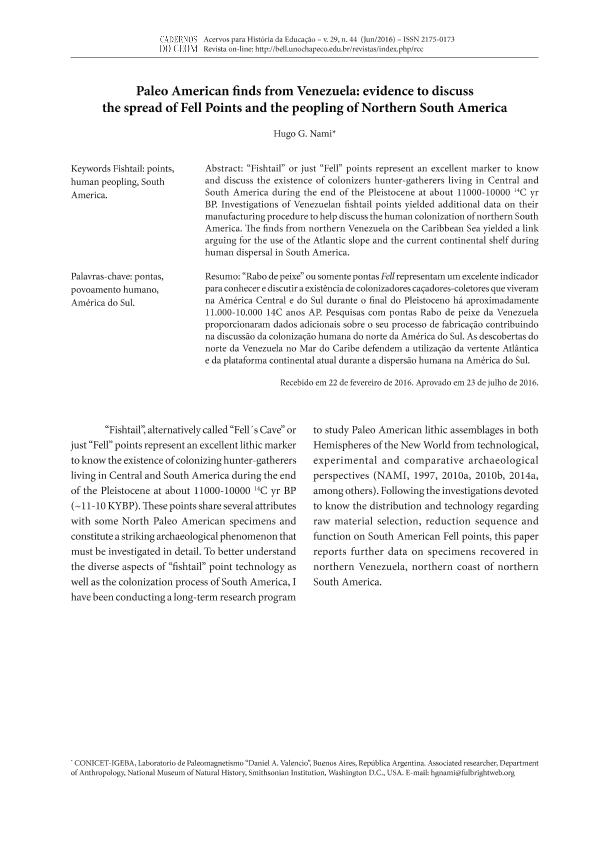Artículo
“Fishtail” or just “Fell” points represent an excellent marker to know and discuss the existence of colonizers hunter-gatherers living in Central and South America during the end of the Pleistocene at about 11000-10000 14C yr BP. Investigations of Venezuelan fishtail points yielded additional data on their manufacturing procedure to help discuss the human colonization of northern South America. The finds from northern Venezuela on the Caribbean Sea yielded a link arguing for the use of the Atlantic slope and the current continental shelf during human dispersal in South America. “Rabo de peixe” ou somente pontas Fell representam um excelente indicador para conhecer e discutir a existência de colonizadores caçadores-coletores que viveram na América Central e do Sul durante o final do Pleistoceno há aproximadamente 11.000-10.000 14C anos AP. Pesquisas com pontas Rabo de peixe da Venezuela proporcionaram dados adicionais sobre o seu processo de fabricação contribuindo na discussão da colonização humana do norte da América do Sul. As descobertas do norte da Venezuela no Mar do Caribe defendem a utilização da vertente Atlântica e da plataforma continental atual durante a dispersão humana na América do Sul.
Paleo American finds from Venezuela: evidence to discuss the spread of Fell Points and the peopling of Northern South America
Fecha de publicación:
12/2016
Editorial:
Centro de Memória do Oeste de Santa Catarina
Revista:
Cadernos do Ceom
ISSN:
1413-8409
Idioma:
Inglés
Tipo de recurso:
Artículo publicado
Clasificación temática:
Resumen
Palabras clave:
Fishtail Points
,
Human Peopling
,
South America
Archivos asociados
Licencia
Identificadores
Colecciones
Articulos(IGEBA)
Articulos de INSTITUTO DE GEOCIENCIAS BASICAS, APLICADAS Y AMBIENTALES DE BS. AS
Articulos de INSTITUTO DE GEOCIENCIAS BASICAS, APLICADAS Y AMBIENTALES DE BS. AS
Citación
Nami, Hugo Gabriel; Paleo American finds from Venezuela: evidence to discuss the spread of Fell Points and the peopling of Northern South America; Centro de Memória do Oeste de Santa Catarina; Cadernos do Ceom; 29; 45; 12-2016; 212-219
Compartir
Altmétricas




